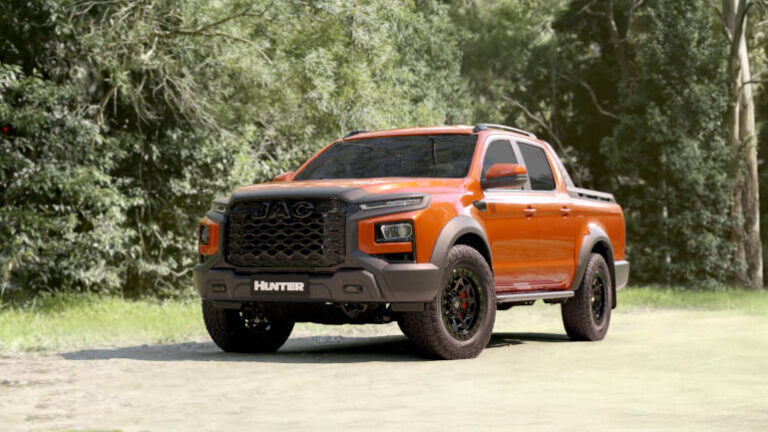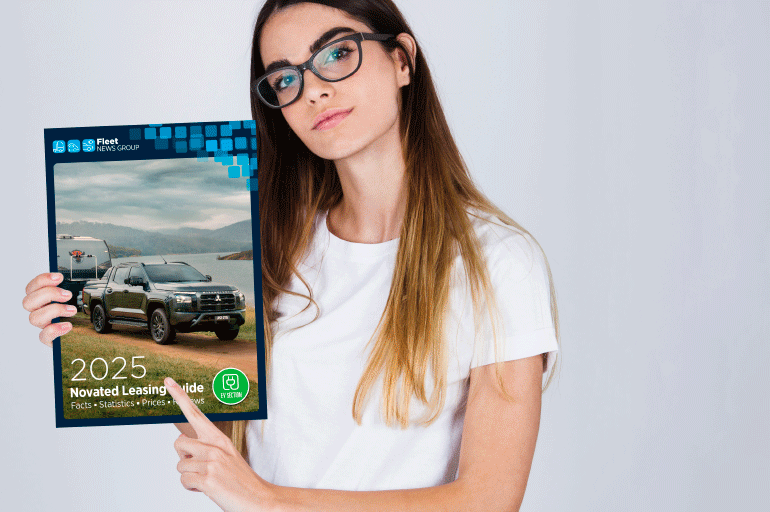After a 14-year absence, the Melbourne Motorshow returned in 2025 with a roar – or more accurately, a turbo-diesel growl mixed with a quiet hum of electrification. Held at the Melbourne Convention and Exhibition Centre, the April event provided fleet buyers and procurement professionals with a clear look at how the Australian automotive landscape is evolving – and just how serious manufacturers are about the lucrative light commercial vehicle (LCV) segment.
The headline? The number of new utes revealed at the show is staggering – and the dream of a viable battery electric utility vehicle (BEV ute) is no longer wishful thinking. It’s real. And it’s coming.
Kia’s Tasman: The Most ‘Aussie’ Ute Yet
The centrepiece for Kia was undoubtedly the Tasman, a rugged new dual-cab ute that’s been shaped almost entirely by Kia Australia. Set to launch in July 2025, the Tasman reflects what Kia calls “the most Australian product ever” – and judging by its features, they’re not exaggerating.
The Tasman will arrive with segment-first features including a slide and recline second-row seat for double cabs and an innovative folding console table with dual wireless phone charging. Add to that a class-leading 45 litres of under-seat storage, and you’ve got a ute designed with fleet comfort and utility in mind.
The top-spec X-Pro trim has been engineered with off-road use in mind, targeting mining, construction, and remote service fleets where performance is critical. It also places Kia in direct competition with the heavyweights of the segment like the Ford Ranger and Toyota Hilux.
MG U9: An MG with a Tray
MG Motor used the show to debut its first ever ute for Australia – the MG U9. This dual-cab 2.5-litre turbo-diesel model marks MG’s bold entry into the second-largest vehicle category in Australia.
With 164kW of power and a clear focus on local conditions, MG’s CEO Peter Ciao said the U9 was “a turning point” for the brand, signalling their intent to become a top-three automaker in the country.
The U9 will arrive in late 2025, with MG confirming it will also be rebadged and sold under the LDV nameplate as the Terron 9, giving fleets even more options from a growing Chinese-backed stable.
FOTON Tunland Returns – With Hybrid Assistance
Another returning player is FOTON, launching the new Tunland V7 and V9 ute range. Known for their commercial trucks, FOTON is re-entering the market with serious capability in tow.
Both models are powered by a 2.0L turbo-diesel engine with a 48V mild hybrid system and a braked towing capacity of up to 3,500kg. Notably, the V9 adds SUV-style coil-spring rear suspension for added comfort on long drives or worksite commutes.
With selectable 4WD modes, BorgWarner hardware and torque amplification, FOTON aims to carve out a slice of the trade and service market where dependability and fuel economy sit high on the priority list.
JAC Hunter: A Plug-In Hybrid Powerhouse
If you thought plug-in hybrid (PHEV) utes were a stopgap technology, the JAC Hunter may change your mind. Revealed globally at the show, this dual-cab PHEV 4X4 offers an astounding 385kW and 1000Nm thanks to its combined 2.0-litre turbo petrol engine and dual electric motors.
JAC is targeting more than 100km of EV-only range, which should comfortably handle the daily urban commute or local fleet use without burning fuel. Add in a vehicle-to-load (V2L) system, 10.25-inch instrument cluster, and a full driver-assistance suite, and the Hunter becomes a compelling green alternative for businesses that still need payload and performance.
Deepal E07: A Ute. An SUV. A Transformer.
Arguably the most intriguing new arrival was the Deepal E07, described as a “Multitruck”. This shape-shifting battery electric vehicle transforms from SUV to ute with a fold-flat tailgate and 300kg payload.
Performance is serious: up to 440kW and 645Nm in the AWD variant, 0–100km/h in 3.9 seconds, and ultra-fast charging thanks to an 800V architecture. The E07 offers up to 642km of NEDC range (real-world figures will likely be lower) and enough smarts to park itself or go camping with massage seats and “resting mode” inside the cabin.
The E07 lands in Q3 2025, and although its payload doesn’t match traditional work utes, the concept of a BEV utility with SUV comfort is now firmly reality.
Peugeot Hybrid Range Expands
While not in the ute game, Peugeot showcased its newly expanded hybrid range – a reminder that many fleets still want to reduce fuel use without going fully electric.
The 308, 408 and 2008 Hybrids all deliver 107kW, use less than 5L/100km, and offer significantly reduced emissions compared to previous combustion-only models. Notably, the 2008 GT Hybrid features a massage driver’s seat and adaptive cruise with stop & go – features once reserved for luxury cars, now appearing in small SUVs.
These models may not tow a trailer, but for urban deliveries or field teams, they offer a balance of comfort, tech, and efficiency without requiring full EV infrastructure.
Kia EVs Show Strength Beyond Utes
Alongside the Tasman, Kia also showcased its growing EV portfolio including:
- EV3: A compact SUV with up to 604km WLTP range and pricing from $47,600 RRP.
- EV5: A midsize SUV already resonating with buyers at $56,770 driveaway.
- EV9: Kia’s flagship electric 7-seater, winning major global awards and now part of many corporate fleets.
All three were available for test drives during the show, underlining Kia’s multi-platform push – from workhorse utes to premium electric family haulers.
Isuzu Focuses on Customer Experience, Not Just Product
Isuzu UTE didn’t launch a new vehicle at the show but instead celebrated the 10-year anniversary of its I-Venture Club. The off-road training program has seen over 7,500 customers build skills and confidence, and importantly, their feedback has directly influenced D-MAX and MU-X updates.
This kind of initiative reinforces Isuzu’s strength in both community engagement and continuous improvement – something procurement professionals often value when assessing whole-of-life vehicle cost and support.
Final Word: Electrification Is Now Part of the Ute Equation
The 2025 Melbourne Motorshow made one thing abundantly clear – the ute segment is more competitive than ever, and no longer defined solely by diesel and payload. Battery electric utes, plug-in hybrids and hybrid-assisted diesels are now part of the conversation.
For fleet managers, this presents both opportunity and complexity. With brands like Kia, MG, FOTON, JAC and Deepal all entering or evolving their ute line-ups, the task of shortlisting suitable options will require close attention to real-world performance, dealer support, total cost of ownership – and charging infrastructure in the case of BEVs.
But the choice is here. The technology is maturing. And the BEV ute is no longer a pipe dream.
Key Takeaways for Fleet Buyers:
- Electrification is real: The JAC Hunter and Deepal E07 are serious entries into the future of fleet-capable utilities.
- Diesel still dominates for towing and payload, but expect hybrid assistance to become the norm within 2–3 years.
- New brands are flooding the market: MG, FOTON, and Deepal all bring competitive pricing and compelling warranties.
- Kia and Isuzu offer strong fleet support and customer-centric programs, with proven performance in tough conditions.
Whether you manage ten vehicles or a thousand, the 2025 Melbourne Motorshow offered a glimpse of the very near future – one where flexibility, fuel choice, and innovation are reshaping what it means to drive a work vehicle in Australia.







